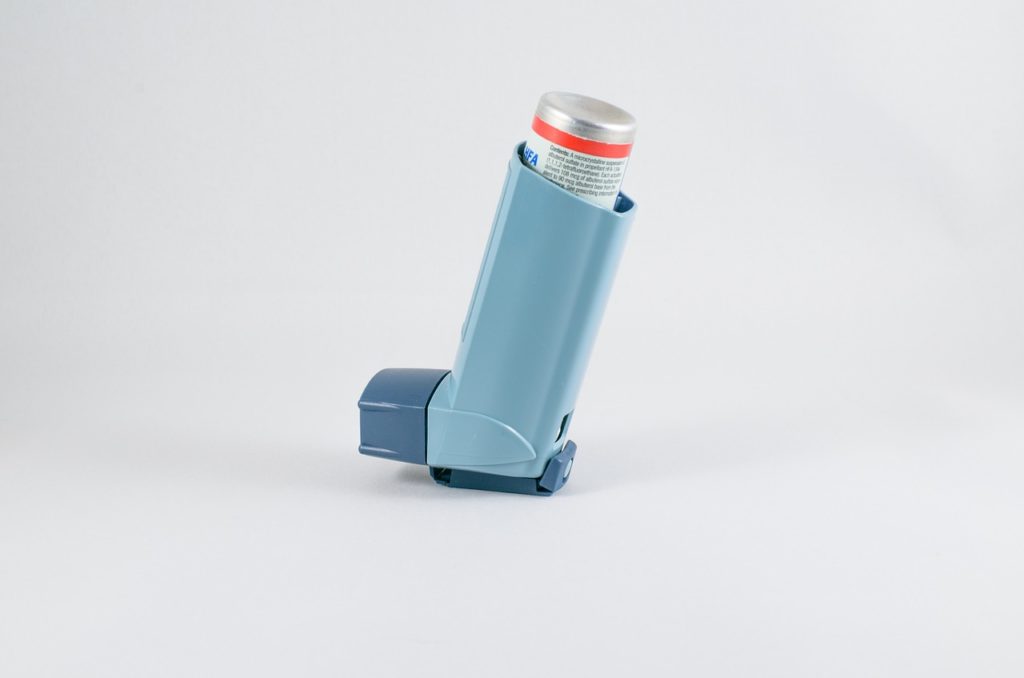
Misuse of asthma medication can be classified in two ways- improper dosage and administration of the medication, or use by an individual other than the whom the medication has been prescribed to. The focus here will be on the latter; as intentional misuse of asthma inhalers has not been extensively examined. [1]
Use of someone else's prescription asthma medication may not necessarily take place with the intention of getting high; a survey of Detroit middle school students reported using someone else's inhaler for reasons such as help with breathing, increased lung capacity during exercise, or increased concentration and alertness.
Misuse may occur by students with or without asthma, with the second group being of particular concern. Use of someone else's inhaler medication to relieve acute asthmatic symptoms may not be problematic, but use of inhaler medication in the absence of asthma may be related to future substance use. [1, 2]
The New Gateway Drug?
Misuse of asthma medication appears to occur primarily in adolescents, with 15% of students in grades 8 and 9 reporting having used an inhaler prescribed to someone else. Based on a cross-sectional study of middle school students, misuse occurred in students between grades 5 and 10, with the highest rates occurring in eighth and ninth grade students.
Researchers suggest that students who misuse asthma medication are at higher risk of smoking cigarettes, binge drinking alcohol, using marijuana or other illicit drugs, compared with students who do not misuse medication. [2]
Students from the Detroit survey indicated obtaining inhalers through friends or family members; inhalers were generally reported to have been 'borrowed', although some students admitted to stealing the medication from others. [2]
Easy-to-access substances like asthma medication may be the first step down the path to future substance use, prompting the need for prevention and awareness programs in students in this age group. [4]
While misuse of asthma inhalers is a relatively new phenomenon, use of inhalants to get high has been around for many years. Documented use of medical gases such as ether, nitrous oxide, or chloroform for the purpose of altering the mind-state first appeared in the late 19th century. [5] Other inhalants include such things as hairspray, paint thinner, correctional fluid, butane, or propane. [3]
Misuse of Asthma Inhalers
The side effects associated with use of asthma inhalers include increased heart rate, increased alertness, and increased lung capacity, in addition to mild euphoria and intoxication. A slight anti-depressant effect has been noted, which could be related to increased use. [1, 2]

Case-studies of inhaler misuse by asthmatic patients showed that inhalers were used in excess to calm anxiety, but also increased the severity of asthma-induced breathing problems. [3]
While it may be difficult to know exactly when a loved one has misused asthma medication, long-term misuse may be suspected if:
- Your child goes through inhalers faster than usual
- Your child insists on having an excessive supply of asthma medication
- Increased frequency of use of inhaler medication (more than 10x per day)
- Use of medication for purposes other than relief of asthma (ex. For relieving anxiety or nervousness)
- Worsening of asthma symptoms- research suggests that excessive use of salbutamol inhaler medication (>20x per day) with the intent of preventing asthma attacks actually led to far worse attacks, as the lungs adapt to the expansion effect created by the medication, leading to failure of the lungs to function properly. Cessation of the medication and replacement with slow-release medication (ex. Becotide) allowed for the return of normal lung functioning; asthma symptoms were then controlled with non-aerosol medication. [3]
Medication Management
Severe adverse effects from overuse of asthma medication are unlikely, so treatment of acute symptoms of misuse are generally not necessary. More important than treatment is the prevention of misuse and education of proper use by those who have asthma.

Targeting those who may be at risk of further substance abuse is key; a study of inhalant use by incarcerated adolescents indicated that those who used inhalants more than 40 times were at much higher risk of dependence and other substance use disorders. [5]
It is not uncommon for adolescents to experiment with drugs or alcohol; prevention efforts should be aimed at middle school students to reduce the number of individuals who may go on to become regular substance users in need of treatment. [1, 4]
Medication management by parents and/or teachers may be useful for limiting misuse of asthma inhalers. It may be necessary to require that all medications be administered by teachers or other school personnel, to limit the access and misuse of medication by students. Keeping medications securely stored and used only when necessary can help to reduce the occurrence of misuse.
Additionally, educating students, parents, and teachers on the importance of using medication only as prescribed may help limit misuse. Students may be unaware of the dangers associated with sharing medication; they may see how the inhaler helps reduce their respiratory distress, and share the medication with a friend without even realizing that this may be problematic.
Identifying whether students are using someone else's medication for the purpose of self-medicating or sensation-seeking is just as important- not all misuse occurs with the intention of getting high, but is still an issue that parents and teachers should be aware of.
References
1.Boyd, C. J., Teter, C. J., & McCabe, S. E. (2004). Pilot study of abuse of asthma inhalers by middle and high school students. Journal of Adolescent Health, 34(6): 531-534.
2.Boyd, C. J., McCabe, S. E., & Teter, C. J. (2006). Asthma inhaler misuse and substance abuse: A random survey of secondary school students. Addictive Behaviors, 31(2): 278-287.
3.Pratt, H. F. (1982). Abuse of salbutamol inhalers in young people. Clinical & Experimental Allergy, 12(2): 203-208.
4.Sharp, C. W. (1992). Introduction to inhalant abuse. Inhalant Abuse: A Volatile Research Agenda, 29: 14-24.
5.McGarvey, E. L., Clavet, G. J., Mason, W., & Waite, D. (1999). Adolescent inhalant abuse: Environments of use. The American Journal of Drug and Alcohol Abuse, 25(4): 731-741.
About the author:
 Stephanie Sands is currently pursuing a Bachelor of Science degree in Kinesiology, majoring in Mind Sciences. She completed an Honors Degree in Psychology in 2012, focusing on eating disorders and personality. She intends to combine her educational background into a holistic wellness practice, to strengthen mental health through a combination of counselling, physical activity, and nutrition coaching.
Stephanie Sands is currently pursuing a Bachelor of Science degree in Kinesiology, majoring in Mind Sciences. She completed an Honors Degree in Psychology in 2012, focusing on eating disorders and personality. She intends to combine her educational background into a holistic wellness practice, to strengthen mental health through a combination of counselling, physical activity, and nutrition coaching.
The opinions and views of our guest contributors are shared to provide a broad perspective of addictions. These are not necessarily the views of Addiction Hope, but an effort to offer discussion of various issues by different concerned individuals.
We at Addiction Hope understand that addictions result from a combination of environmental and genetic factors. If you or a loved one are suffering from an addiction, please know that there is hope for you, and seek immediate professional help.
Updated & Reviewed By: Jacquelyn Ekern, MS, LPC on October 31, 2016
Published on AddictionHope.com
